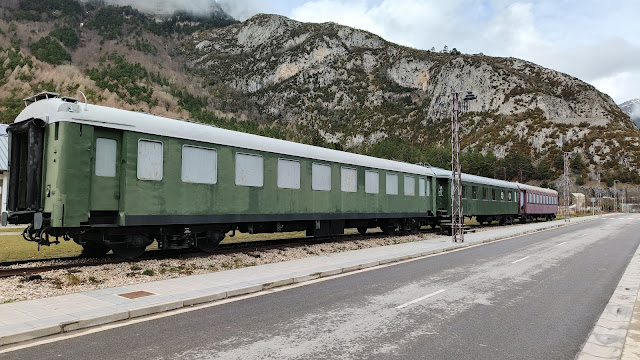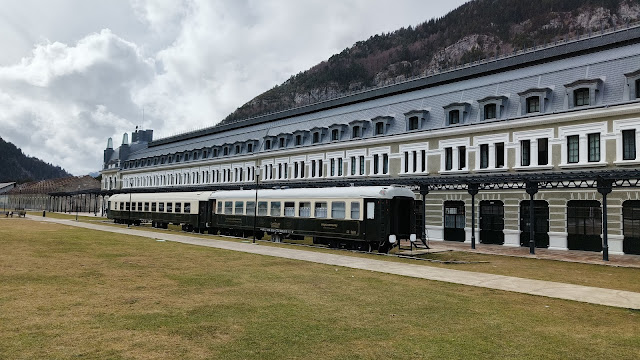Canfranc railway station (Estación de tren de Canfranc - Canfranc-Estación) is a historic building located in the Aragonese Pyrenees (Huesca, Aragón), on the border between Spain and France. It is made up of a complex of buildings that are unique both for their elegant appearance and their history.
This station played an important role in the first half of the 20th century as a railway station connecting Aragon with France, especially during the Spanish Civil War and World War II.
The town of Canfranc (and Canfranc-Estación) is located north of Jaca, on the border with France. It is usually visited by car, but can also be visited by train, stopping at the new railway station.
Canfranc International Railway Station (historic building) and its surroundings
The main historical building of the railway station was built in 1915-25 and closed in 1945-49, remaining almost abandoned for many years, but being highly popular and remembered for its history and architectural beauty. Around the building you can see the railway tracks, 20th century railway machinery (cranes, etc.), warehouses and goods transfer areas.
The beauty of the site lies not only in the uniqueness of the building in the middle of the mountains, but also in the landscape and nature surrounding the ensemble of buildings and open areas.
Today the main building of the station is restored and transformed into a luxury hotel. The restoration of the area was done between 2017 and 2023. Today the area can be visited, being a well-remembered part of the history of the trains and the recent history of Aragon (see more information here).
The area has a garden-museum (Jardín Ferroviario) in the surrounding area where you can see old train carriages and machinery of the time. There are also walking routes nearby where you can go on nature excursions.
Photos of the historic station (now a hotel):
Gardens, wagons, train tracks and old machinery (Railway Garden / Jardín Ferroviario):
Franco-Aragonese cuisine restaurant car:
Photos of the interior of the hotel:
Walking routes in the surrounding area:
Canfranc town, Somport Tunnel and the new railway station
Canfranc (urban centre) is located next to the station. The town is divided into two population nuclei: Canfranc village and Canfranc Station, both very close to each other.
Canfranc is a small town well known, apart from the railway station, for being next to the French border, as well as for the ski resorts in the area and for its nature. It is a small town but very popular with tourists, with hotels, restaurants and shops.
The new train station, currently open, is located just behind the historic building of the old station. Also, next to the area is the Somport Tunnel. This tunnel connects this area of the Pyrenees with France by road. It is 8.6 km long and the current tunnel was opened in 2003.
New train station:
Signs: Map of Canfranc International Station, Explanada de los Arañones, photos and history of the place.
Other nearby places to visit
Nearby places: Jaca, Villanúa, Sabiñánigo, Huesca.
Ski resorts: The nearest ski stations are Astún and Candanchú.




















































